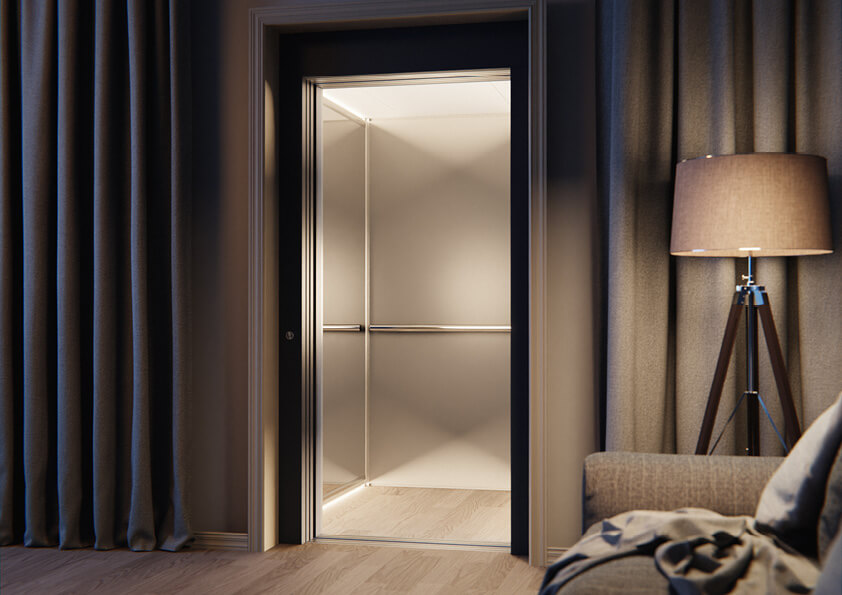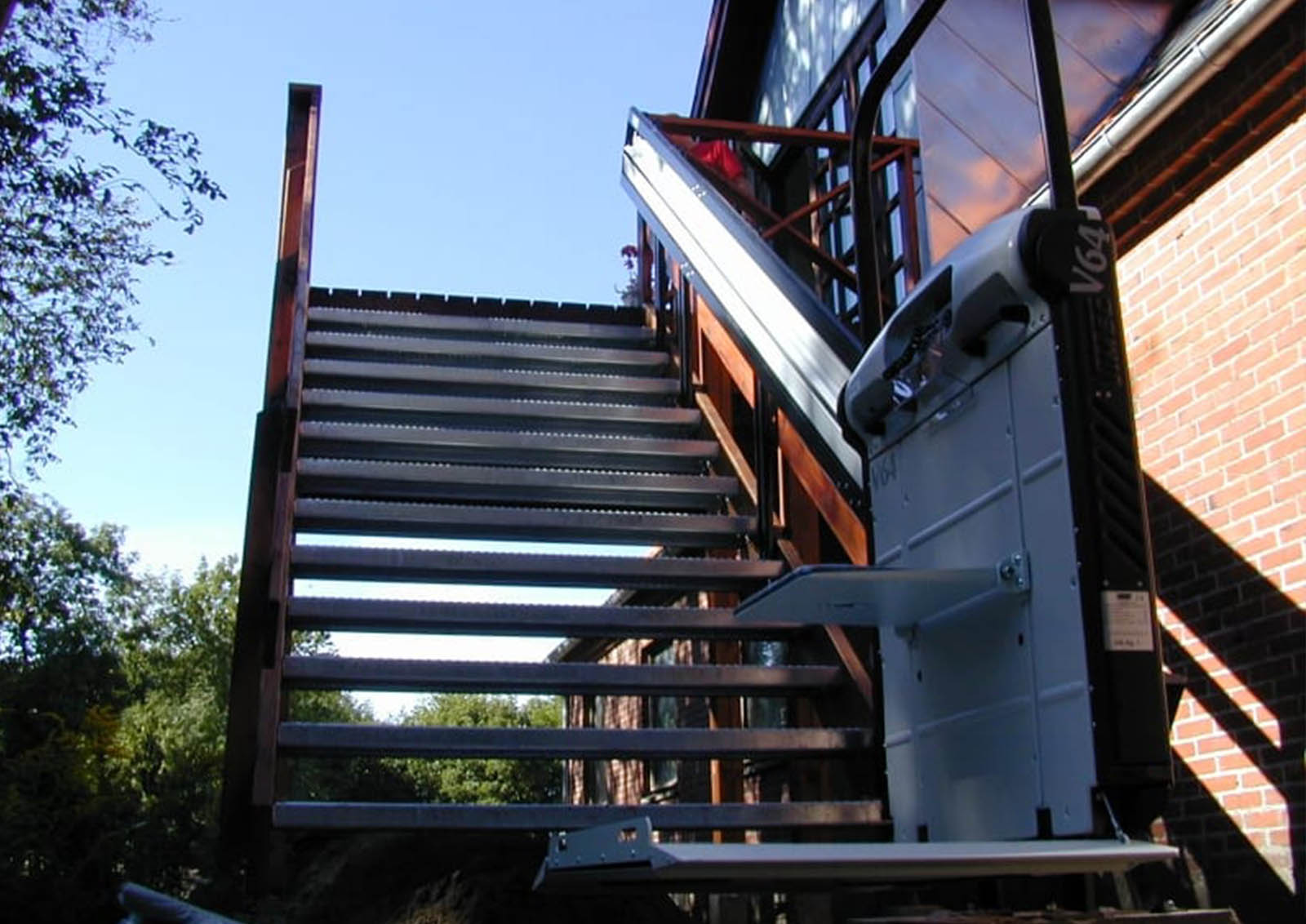
MENU
CONTACT US

PLATFORM LIFTS I DECEMBER 11 2018
Access platform lifts were originally designed to help wheelchair users ascend and descend between floor levels. These platform lifts are now in place to help anyone with impaired mobility. This covers anyone who might struggle with stairs such as people with pushchairs, crutches etc. That said, whether or not you are a wheelchair user, you probably used a platform lift recently without even knowing it. Many architects and building managers are now opting to install platform lifts when the preferred option of a standard elevators is not possible or appropriate. This ensures disabled access in the process.

When designing a building, the main advantage of a platform lift is that they require only a small pit or, in some cases, doesn’t need one at all. This is contrary to most passenger lifts where, by law, there is a requirement for a large pit. This large pit is to make room for the mechanisms and safe areas for ongoing maintenance. The requirement for a large pit area often renders it impossible to build elevators into some existing buildings.
The reason that platform lifts require less pit room is due to being certified as ‘machines’ as opposed to ‘lifts’ under the Machinery Directive 2006/42/EC. This distinction means that platform lifts have less restrictive constraints imposed on them. This means that platform lifts can be built with both reduced headroom and pit clearances. This enables platform lifts to be installed more cheaply and in a wider range of buildings.
There are a variety of different platform lifts that can be installed. These include:
Machinery Directive Lifts are normally either wall-mounted in a pre-built shaft or can be supplied with their own support structure. These lifts do not need a deep pit. Pit requirements are typically from 100mm below floor level.
Machinery Directive Lifts are effectively passenger lifts, although they are limited in speed. They generally consist of an automatic car, one touch control, powered sliding doors and a shaft. Low speed lifts can typically be installed in a wide range of buildings such as homes, retail stores, offices and schools. Pitless lifts are an increasingly popular alternative to standard lifts as they are easier to install and integrate into buildings. Machinery directive lifts can be used to transport both disabled and non-disabled persons.
Designed only to move between two levels, open platform lifts transport users on a small guarded platform from one level to another. These lifts are therefore much smaller than conventional lifts. They also do not have to use a contained car, oftentimes they do not even require a shaft. Open platform lifts are used for those in wheelchairs or those who have difficulty using steps. These lifts are most commonly installed in buildings where a ramp cannot be installed.
Open platform lifts are typically built alongside a staircase and are operated by holding down a push button. This system is known as ‘hold to run’. With the ‘hold to run’ system, users can stop the lift by simply releasing the button. Open platform lifts can be installed both internally and externally, where the difference in level is 3 metres or less.
Enclosed platform lifts consist of a moving platform. Unlike open platform lifts, these lifts are contained in their own enclosure. With this enclosure the lift moves up and down a shaft. These lifts generally move between two to six floors. Like the open platform lifts mentioned above, the enclosed platform are operated by constant pressure controls (‘hold to run’) and can be fitted internally or externally. Enclosed platform lifts are generally used by those with mobility issues. They are installed in both commercial and residential buildings.
Wheelchair platform stairlifts are mounted on a railing, attached to a wall or post-mounted to a staircase. These lifts are used exclusively for those with mobility issues. Wheelchair platform stairlifts are designed to carry one person, either in their own wheelchair or on a seat provided. This type of lift is usually installed in buildings that lack the space for a passenger or vertical platform lift to be built. Wheelchair platform lifts fold away when not in use, allowing the stairs to be used by pedestrians. Like the two options mentioned previously, these lifts are also ‘hold to run’ operated .

There are three main types of drive systems that enable the platform lifts to ascend and descend. These are usually controlled by electrical inputs, button operated inside the elevator. This sends signals to a central processor, which in turn start the pumps or motor.
This system is used for platform lifts that have a shaft. With this system a pole runs up the entirety of the shaft with a screw thread and a motor drive placed on the platform. The motor drives a nut to make the lift ascend or descend. The screw is lubricated by an oil reservoir on the platform. This adds a tiny bit of oil to the thread, which lubricates as it goes.
In the hydraulic drive system, the lift platform is attached to a hydraulic ram. Hydraulic fluid is pumped from a tank into the ram. This works to extend and elevate the lift. For the lift to be lowered, a valve is opened and the flow is simply reversed.
This system uses a set of counter weights and a motor, normally located at the top of the shaft. This motor drives a steel rope that connects the lift car and the counterweights. The motor drives in both up and down directions. As as the lift is counterweighted, the motor provides the difference needed to move the load on the lift.
The adapted use of platform lifts represent a cheaper and easier alternative to standard passenger lifts. What is even more impactful is that the trend of using platform lifts has opened up opportunities for lifts to be installed in more buildings than ever before. Previously, installing lifts in building with pit restrictions meant having to find complete workarounds or abandon projects altogether. The adaptable nature of platform lifts however means that there are more options. This helps to make the lives of of those with mobility issues that much easier to navigate.